Electricity and Appliances
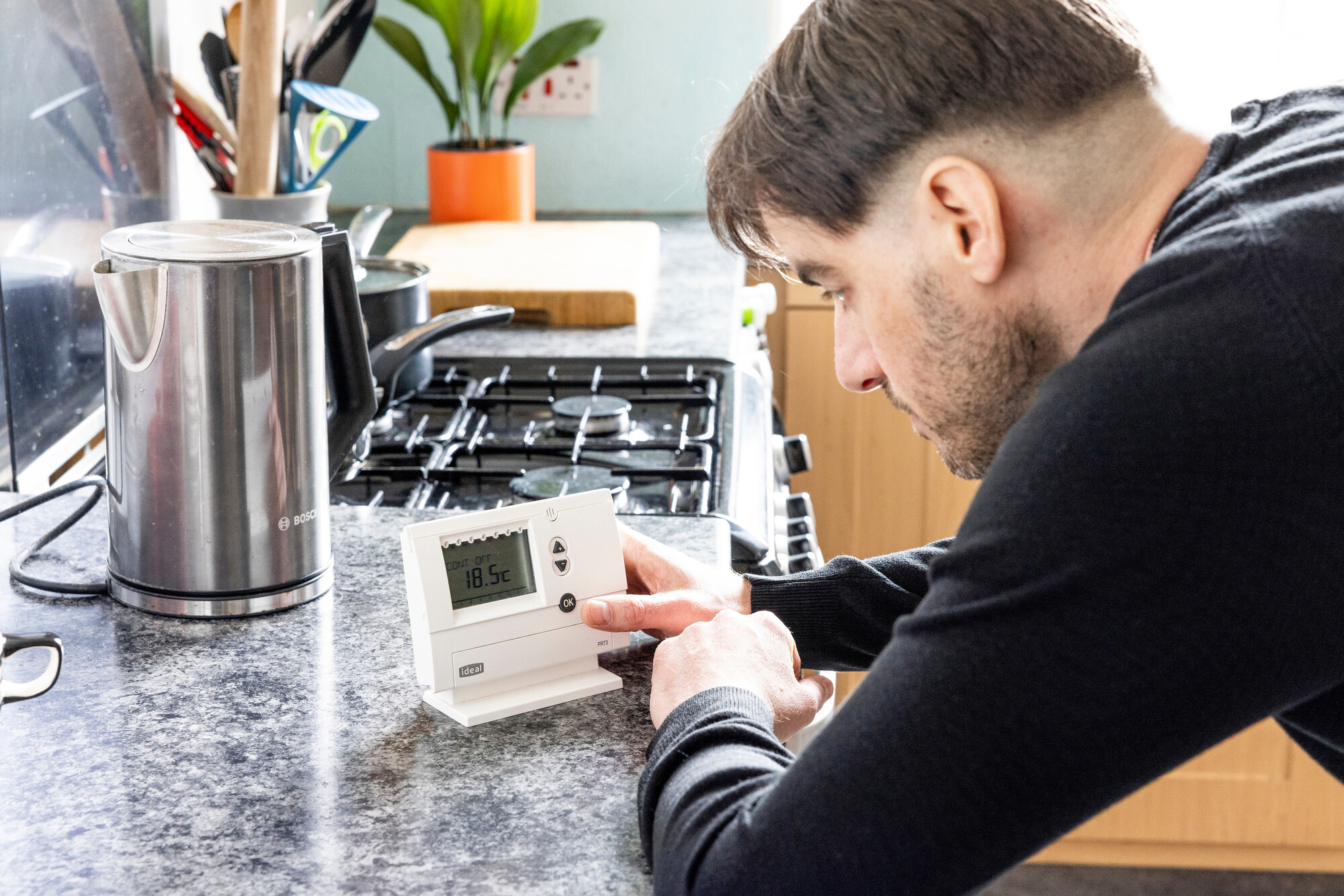
There are plenty of opportunities around the home to save money on our electricity bills and create a more energy efficient home.
Have you tried any of these energy saving ideas?
On this page:
Lights
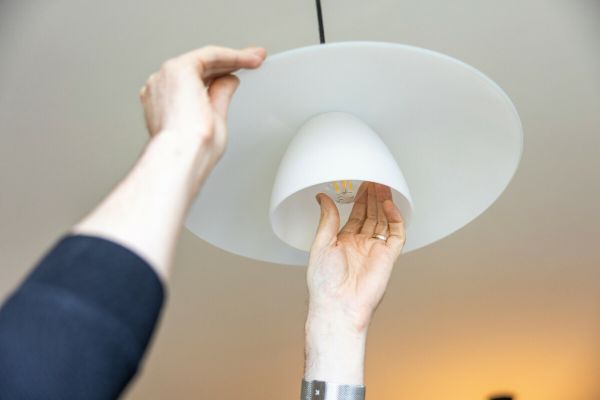
About 15% of our electricity goes towards brightening our home. Don’t worry – we don’t have to leave ourselves in the dark to start saving energy.
Turning off lights
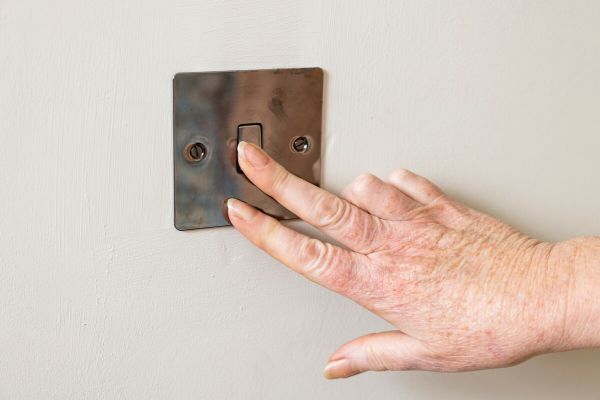
Start with an easy win: if nobody is using the room, then turn the lights off. There’s no downside to this one, and it should save you around £7 and 6kg of carbon a year.
Use the right lights
If you’ve got several lights in a room, then you might not need them all on at the same time. If the lamps are on, then try turning off the overhead light. Is it possible to get a good level of brightness without having all the lights on at once?
You can also match your light level to whatever activity you’re doing. If you’re watching TV, you might only need a low background light. If you’re reading, it’s more likely you’ll want a bright, direct light.
Replace bulbs with LEDs
The first energy efficient lightbulbs were around 70-80% efficient. They were much better value for money than traditional lightbulbs, but they took a long time to get to full brightness.
Luckily, energy efficient lights have moved on. We now have LEDs (Light Emitting Diodes) which reach full brightness as soon as you flick the switch. These use 90% less energy than old incandescent bulbs, and about 50% less than older energy saving bulbs.
Next time one of your bulbs go, why not try out an LED? The Energy Saving Trust has made a handy table for choosing the right replacement:
| Traditional bulb | LED/CFL bulb |
|---|---|
| 15 watt | 140 lumen |
| 25 watt | 250 lumen |
| 40 watt | 470 lumen |
| 60 watt | 800 lumen |
| 75 watt | 1,050 lumen |
| 100 watt | 1,520 lumen |
Cooking
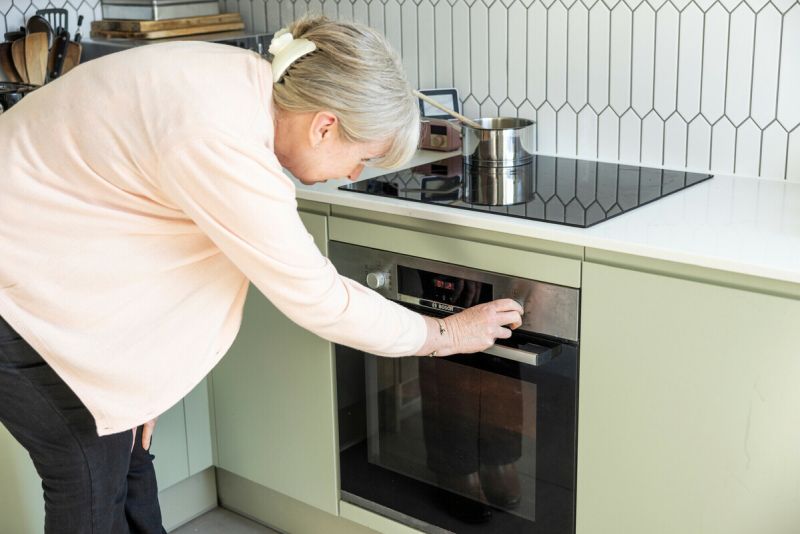
Whatever equipment you have in your kitchen, there are some easy switches you can make to save money.
The oven
We often pre-heat the oven whilst we’re doing something else, like watching TV. If we’re distracted, the oven can reach the correct temperature and sit empty.
Some ovens have an alarm which lets you know when the oven has pre-heated. Use this if you can.
If your oven doesn’t have an alarm, make sure you regularly go through to check the temperature. You should start to get a sense of how long preheating takes. Then you can start setting your own timer.
Your oven stays hot for quite a while after it has been turned off. You can use this leftover heat to finish off the last five minutes of your cooking.
If you have a microwave, try use this instead of the oven. Microwaves use much less energy than ovens. This is because they heat the food directly, not the air around it.
To compromise, you could partially cook something in the microwave, then transfer it to the oven. Five minutes in the microwave should knock twenty minutes oven-time off your baked potato.
The hob
Whether you have an electric or gas hob, you can save energy when cooking by:
Putting lids on pans
Putting a lid on a saucepan means the food inside cooks faster. The steam doesn’t escape as quickly, so more of the heat energy stays inside your pan. This means you can turn your hob off sooner, saving you energy.
Make sure the lid fits properly so you’re keeping in the maximum amount of heat.
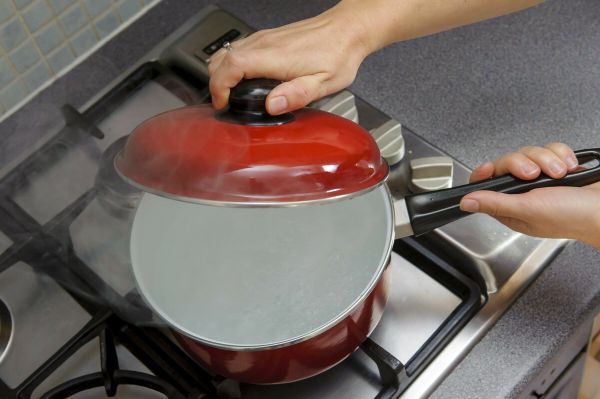
Matching the pans to the rings
If you’re using a small pan, make sure you’re also using a smaller hob ring. Heating a small pan on a large ring means a lot of the heat gets lost to the surroundings. Using a small pan on a small ring makes sure that most of the heat is transferred to the pan.
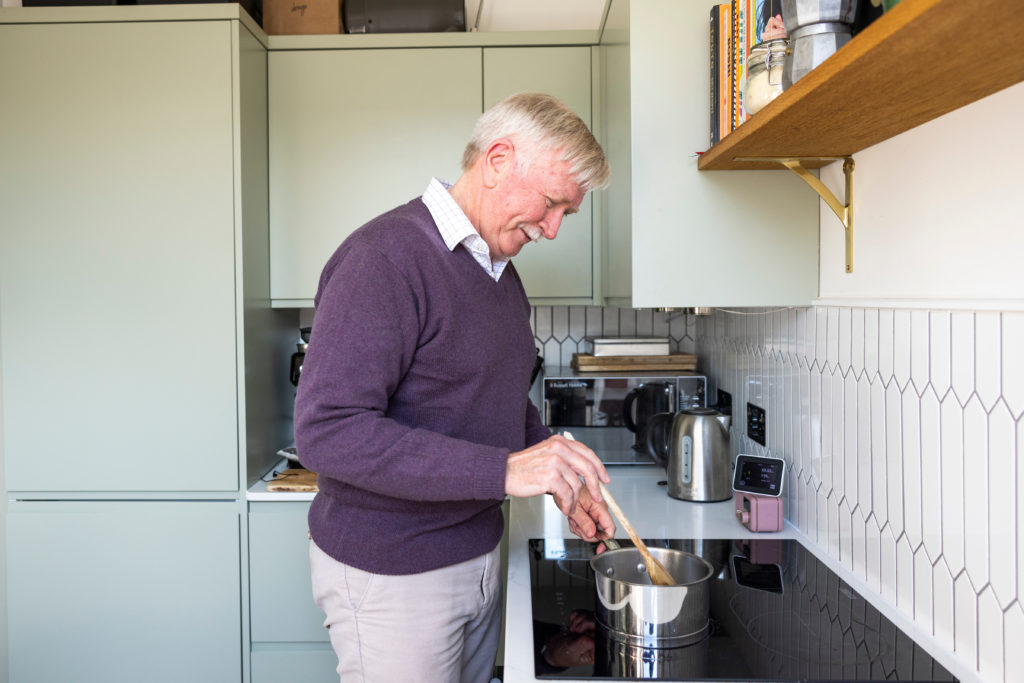
Fridge and freezer
Check the temperature
Make sure your fridge and freezer are only as cold as they need to be. The Food Standards Agency says your fridge should be between 0 and 5°C and your freezer should be around -18°C. When fridges and freezers are set lower than this, they’ll use extra energy for no extra benefit.
If your fridge and freezer have thermostats, then you can adjust these to the recommended temperatures. If they have a numbered dial, then you could get a fridge thermometer to help you adjust the temperature. These are relatively cheap, costing around £4.
Defrosting and cleaning
Defrosting your freezer means it doesn’t have to work as hard, which saves energy. To avoid damaging the freezer, you should switch it off before defrosting it. It’s a good idea to put plenty of towels down in the bottom of the freezer and on the floor.
Similarly, you can help your fridge run more efficiently by cleaning its condenser coils. You’ll usually find these behind your fridge. First, it’s a good idea to turn off the fridge. Next, you’ll need to pull the fridge away from the wall and unscrew the grate that usually covers the coils. Finally, you can give the coils a gentle dust to remove any build up of dirt.
Home appliances
Our home appliances use energy to run. Here are some energy-saving tips we can use for nearly all appliances:
Very few things around the home need to be left on all the time. Lots of appliances are kept on for longer than they’re needed. If you’re not using something, turning it off will save you energy.
It’s also worth remembering that something is only really “off” when it’s turned off at the wall. Leaving an appliance on standby means it’s still using energy, even if it’s not technically being used.
Getting into the habit of turning devices off at the plug can help you save around £45 a year on your electricity bills.
When your old appliances reach the end of their lives, replace them with more energy-efficient models.
New electrical appliances should come with an energy efficiency rating (EE rating). The higher the rating, the less electricity is wasted. Ratings run from A (most energy efficient) to G (least energy efficient).
Lots of us have the TV on for background noise. This might be just for ourselves, or it might even be for our pets. If no-one’s watching the TV, why not try switching to the radio? A radio is much cheaper to run but will still provide a comforting level of background noise.
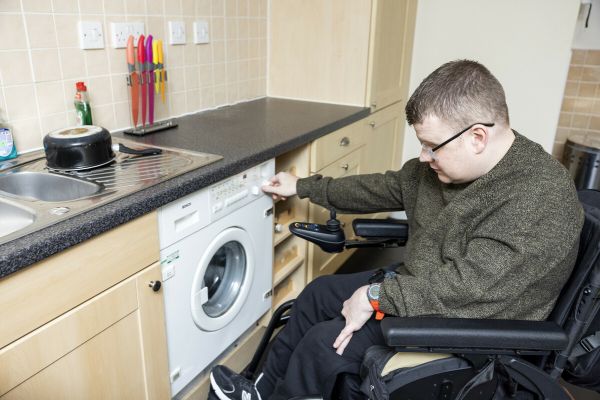
Wash clothes at a lower temperature
A 30-degree wash will use about 40% less energy than the same wash at 40 degrees. Most modern detergents work just as well at lower temperatures. This means your clothes will come out just as clean after a low temperature wash.
Simply turn the temperature on your machine down to 30 degrees or use the eco setting.
Fill the washing machine
To save further, try and make sure you’ve always got a full load of laundry before putting a wash on. That way, you’ll be making the most of the hot water, electricity, and detergent.
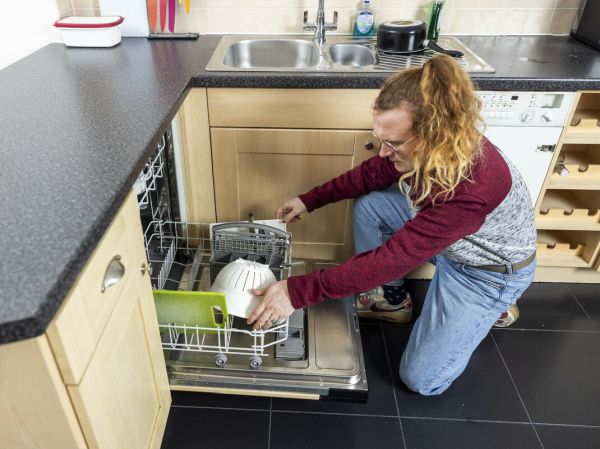
If you use a dishwasher, then try running it at a lower temperature.
Most eco cycles will run at 50 degrees. They typically use around three litres less water than other cycles. This means you’re heating water to a lower temperature, and you’re heating less of it. That’s a double energy saving, and you’ll still end up with sparkling clean dishes.
To save further, ensure the dishwasher is full before running it. A full load means you’re making the most of the hot water. Just be careful not to overload it or block the arms.
A tumble dryer uses about £1 of electricity an hour, making it one of the most expensive household appliances to run.
Try to air-dry clothes as much as possible. This might be trickier in winter, as you’ll need to keep a window open to avoid damp. You may be able to partially air-dry the clothes, then put them in the tumble dryer. That way, you won’t have to run the dryer for as long.
Another option would be to invest in an electric clothes airer. These are much cheaper to run, typically costing about 8.5p per hour.
When you do use the tumble dryer, make sure to clean its filter first. If you leave dust, lint and fluff in the filter, then the dryer will need to work harder to do its job. As a result it will use more energy. Cleaning the filter before each use will save energy.
Useful pages
Is this page useful?